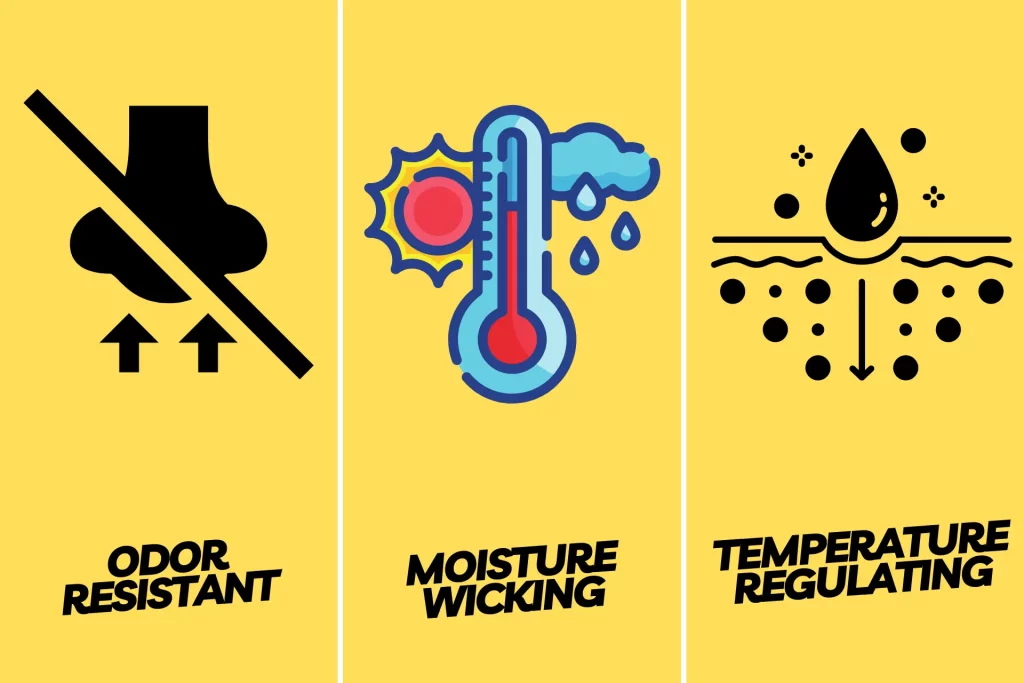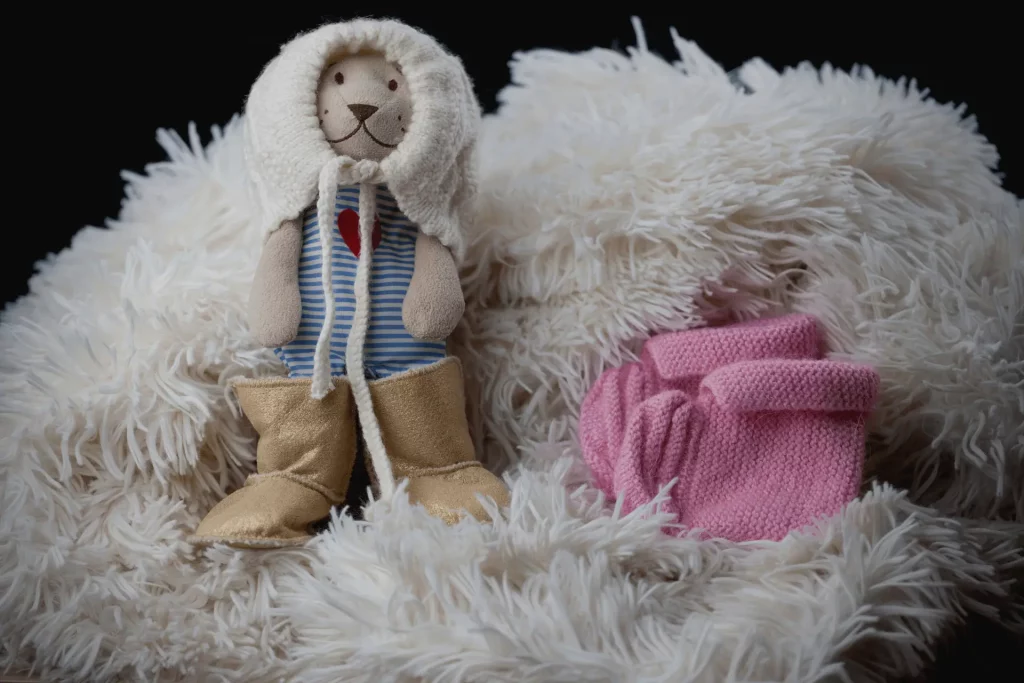Merino wool is derived from Merino sheep, which were originally imported from Spain to produce it. Nonetheless, they are most usually seen in Australia. According to the latest data, they are also raised in South America, the United States, and New Zealand.
After cotton and polyester, merino wool is the most frequently used and well-known fabric on the market. When it comes to outdoor gear, it’s an ultra-soft fabric that’s typically found in socks and performance base layers. It’s also one of the most sought-after fabrics on the market.
Merino sheep produce the best wool on the planet, which is generated from their wool. Merino wool is produced by the wool-growers of Australia, who employ environmentally friendly agricultural techniques to do so. Merino wool is distinct from the synthetic wool that is produced in industrial settings. Merino wool is a natural fiber that is generated by Merino sheep all year long. It is the most expensive type of wool available.
You should be aware of the drawbacks of using merino wool in your wardrobe so that you can make an informed decision when deciding whether to use this material over another. More information about the benefits and drawbacks of wearing merino wool apparel can be found by continuing reading!
Table of Contents
What Exactly Is Merino Wool?
Australian and New Zealand merino wool is derived from merino sheep that reside in the highlands of their respective countries.
These sheep were originally from Spain, and they were considered so valuable that it was forbidden to transport them outside of the country. There are also merino sheep breeders in the United States and various sections of South America.
Because merino wool is ultrafine, its fibers are longer, softer, and stronger than those of other types of wool. Despite this, there are numerous similarities between it and conventional wool.
The key difference between it and conventional wool is that, while it can keep you warm during the winter, it can also make you cool in the summer, unlike traditional wool.
To give you an idea of how thin merino wool is, real hair is around 75 microns in thickness and normal wool is approximately 40 microns in thickness.
The micron count of merino wool ranges from 15 and 24. If you imagine wearing a sweater made of human hair thicker than typical wool, you’ll have a better understanding of what I’m talking about.
Properties of Merino Wool:

Merino wool is a fantastic insulator and is available in many colors. It offers warmth by insulating the body’s heat and sheltering it from cold weather factors like rain or snow. It also acts as an insulator against high-level winds, which may send shivering shivers up your spine in frigid temperatures.
Additionally, because of their capacity to breathe, merinos are comfortable enough to sleep through the night without feeling zipped up within an overcoat, no matter how hot the outside temperatures grow.
- Merino Wool is Odor Resistant:
In addition, because most wools are antimicrobial, you won’t need to layer up as much when climbing up mountains. Merino wool fibers function similarly to insulation in a home in that the thickness of the fibers prevents harmful microorganisms from flowing through. Specifically, the kind of bacteria that produce foul odors should be avoided.
In addition, merino wool has a high absorption rate. Instead of remaining on your body, sweat is absorbed into the fabric. Due to the presence of keratin in wool goods, microorganisms that cause smells are broken down, and the wool effectively cleans itself.
The fact that the wool is machine washable means that it does not require as frequent washing as your other garments. Hang it up to air out, and it will be as good as new the following morning.
- Moisture-Wicking:
Wool fibers are hydrophilic, which is why they are so useful in a variety of applications. At the same time, these fibers can absorb up to 35% of their weight in moisture while remaining dry to the touch.
As a result, moisture is drawn into the fibers’ core rather than staying on their surface, as previously thought. They are also responsible for the warmth and insulation provided by wool.
Breathability is referred to as moisture buffing in the scientific community. That’s because the fibers collect moisture from the environment via the skin and release it when the skin becomes dry again, earning the name “wicking.”
Due to the speed with which wool dries, some individuals wear it during the hotter summer months. When it eliminates the moisture that it has gathered, it leaves you with a fresh sensation that makes the piece of clothing feel extremely lightweight compared to before.
- Temperature Regulating:
Wool has a wide range of applications. Warm in the winter and cool in the summer will keep you comfortable all year long. Most people know that wool keeps you warm, but few know it may also keep you cool when worn in the summer.
When the fibers absorb heat, it is also removed from the body, allowing them to remain cool. This reveals why merino sheep do not perish due to the extreme heat experienced under the Australian sun.
No matter the time of year it is, ultraviolet light is dangerous. During the winter months, the sun doesn’t take a break from shining.
With merino wool clothes, you won’t have to worry about becoming too hot in long-sleeved t-shirts or getting sunburned in short sleeve t-shirts throughout the summer months.
It will keep you cool enough throughout the warmer months that you won’t give getting sunburnt forearms a second thought at that time.
Advantages & Disadvantages of Merino Wool:
Let’s talk about the pros and cons of utilizing merino wools while producing your apparel and how they might be balanced. Both of these factors should be taken into consideration before purchasing this fabric, so continue reading!
Advantages of Merino Wool:

Merino wool is sold all over the world and offers a variety of advantages.
- Quick Drying:
Merino wool’s quick-drying properties can help regulate body temperature and prevent sweating. This can make it a good choice for outdoor and athletic apparel, as it helps to keep the wearer comfortable and dry. The quick-drying nature of merino wool can also make it easier to care for, as it will dry more quickly after washing.
- Deodorant Function:
Because of its aroma, it is commonly referred to as a deodorant. Merino has a deodorant function and prevents unpleasant odors from emanating from the body when it is worn. It contains antimicrobial qualities that aid in the destruction of offensive smells.
- Wrinkle-Free:
The garment may be worn numerous times without the need to wash it. Merino wool textiles do not have creases because the fibers are too soft. It also saves time by not having to iron over and over again.
- Versatility of Merino Wool:
Merino wool is a versatile material that can be used in a wide range of products, including clothing, blankets, and home goods. It is also suitable for use in a variety of settings, from formal to casual.
- Moisture Absorbent:
The Merino wool textiles are ideal for packing in a travel bag while on the road. Merino wool has excellent moisture absorption properties and may absorb up to 30% of its weight in moisture without feeling moist. Wool is the most hydrophilic fiber available among all-natural textiles.
It is beneficial since it actively absorbs sweat and rain, therefore keeping you dry and comfortable. It also aids in the regulation of the body’s internal temperature. Merino sheep’s wool has anti-static properties. Dirt is drawn to the static wool by its static charge.
- Environmental Benefits of Merino Wool:
Merino wool is a natural, renewable resource that is biodegradable and does not produce harmful emissions during its production and processing. Additionally, merino wool is naturally flame resistant, which can reduce the need for chemical treatments that can have negative environmental impacts.
It is also a magnet for lint and other tarnish. Because of its wrinkle-free fabric and anti-odor qualities, it does not need to be washed over and over again.
Merino wool is renowned for its natural organic production, making it a beneficial choice for human health. There are many health benefits associated with merino wool, which can be explored here.
Disadvantages of Merino Wool:

Do you want to spend $70 on a t-shirt crafted of merino wool to show your support for the cause? We are not here to accuse the much-loved material, but we will certainly point out the drawbacks and inadequacies of this wool so that you may make a more informed decision about your clothing choices.
The following is a list of the most significant drawbacks of the well-known merino wool:
- It is More Expensive than Normal Wool:
Cloths and items made of merino wool are significantly more expensive than those made of common wool.
This is because it takes twice as much material to construct a garment out of merino wool as it does to build a garment out of standard yarns, which more than justifies the higher price of the material.
However, it may have a significant impact on your financial situation. In other words, the next time you go shopping, you best be emotionally and financially prepared for dents.
- Limited Color Availability:
Merino wool is typically available in natural shades, such as white, cream, and various shades of brown. While it is possible to dye merino wool, the color may not be as vibrant or long-lasting as synthetic fibers.
- Not So Soft:
Those individuals who attempt to convince you that merino wool is a luxuriously soft substance are either employed by a company or lying. T
It is because Merino wool is not soft. It is without an individual, neither silk nor cotton, which is why you would not be able to purchase a merino wool towel on the market. However, it must be acknowledged that merino wool, like other types of wool, is not scratchy in the least bit.
- The durability of the Merino wool is a tad below average:
Merino wool was formerly thought to be the most durable of all-natural fibers. Despite this, owing to “Warmth technology,” various synthetic fiber materials are now commercially available that consistently surpass merino wool.
Even though the merino shirts you purchased the week before should have lasted more than a few cold-rinse washes, you will be astonished to find yourself with a popped-up tear as the fibers break down over time.
- A tad Itchy:
If you have extremely sensitive skin, merino wool goods are not recommended for you to use. However, even if there is no question that merino wool is a thousand times softer than conventional wool, you may become unpleasant after wearing it for two or three years. My grandmother knitted me a sweater out of wool that is still the nicest wool I have ever felt in my life.
Many people adore the softness and comfort of merino wool, but some may find it itchy. We will provide you with an overview of Merino wool’s itching properties in this blog post.
- The Dye-Ability of this Fabric is not the best:
If I were to suggest that merino wool is Hydrophilic, We would be completely incorrect. It is because merino wool is not the most effective material when it comes to releasing the water that has been absorbed.
According to the results of an experiment, a shirt made entirely of merino wool needed 0.4 times longer to dry than a shirt made entirely of polyester. According to these numbers, a polyester garment dried in 34 minutes, and a merino shirt dried in less than 48 minutes. That is a significant amount of time.
- Exceptional Toughness, but no Invincibility:
Up to a specific extent, merino wool is a durable fiber. It is indeed more durable than conventional wool clothing. You will observe, however, that the elbows will acquire holes after a certain number of wears.
It is hardly strictly a negative development, but it is not positive considering how expensive it is. Because of this, there aren’t many different styles of merino wool pants available.
Moths are attracted to merino wool because of its resilience. Moths are attracted to animal fibers because they provide tasty food. Because merino wool is derived from merino sheep, you’ll certainly have to protect your garments from moths that want to turn you into supper if you wear them.
- Cleaning Process:
Everything made of merino wool can shrink or get torn if it is not washed and cleaned properly. It is recommended that you wash merino wool on the gentle cycle, avoid using the dryer, and limit the number of times it is washed each week.
Although proper washing and drying may extend the life of merino wool garments, doing laundry on the fly can be a real inconvenience. Most importantly, pay attention to how you dry the clothing because if they are not washed appropriately, there is a strong probability that the wool may shrink and become brittle.
- It is not Vegan-Friendly:
Shearing is done to harvest the wool from the sheep. Shearers handle the sheep during this operation, which may be tough with them at times. On rare occasions, the motorized shears nick the sheep’s skin, resulting in a minor injury.
In extreme circumstances, shearers paid by the pound have handled sheep so harshly that the sheep have died due to the shearers’ efforts to obtain wool as quickly as possible. Even though these blunders are regarded as unacceptable, they do occur.
Wrapping it Up:
There are several advantages to using merino wool. It does, however, have several disadvantages. The investment may be worthwhile. However, it has the potential to expose itself to be false.
There are many various ways to look at this, but the most important thing is to choose the right for you and your way of life. Investing in merino wool apparel isn’t a terrible decision for hikers who enjoy hiking in hot and cold locations.
You may enjoy trekking in warmer areas, in which case you should experiment with synthetic textiles to see how you like them. You don’t want to invest heavily in merino wool to find out that you later dislike it.
If you enjoy hiking in chilly areas, you should consider your alternatives. For example, you may wear merino wool clothing to keep warm and toasty, or you could wear alpaca fur clothing to feel soft and comfortable.

